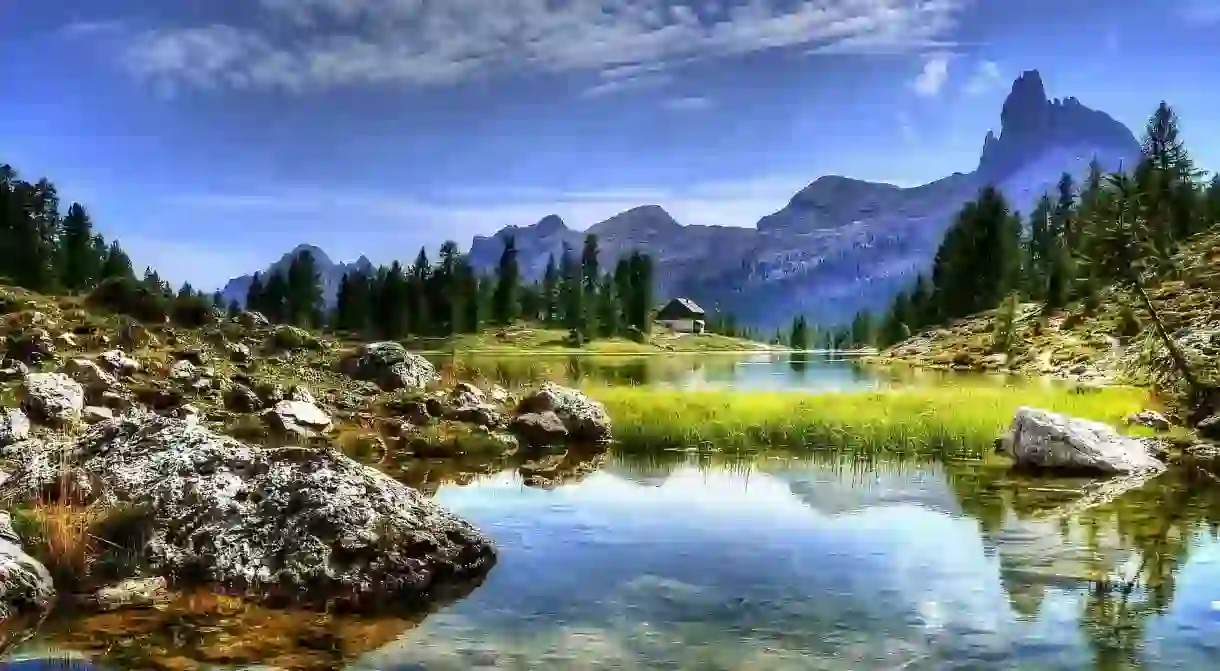The Best Natural UNESCO Sites in Europe to Visit That Aren’t the Fjords

From a remote volcanic island off Iceland to some of the highest mountains on the continent, explore some of the best natural UNESCO World Heritage Sites in Europe.
Swiss Alps – Jungfrau-Aletsch

In the eastern Bernese Alps in southwest Switzerland, this is the largest glaciated area in Europe, with over 35,000 hectares (135 square miles) of glacier. It is home to the Aletsch glacier, the largest in the Alps. The area is dominated by towering peaks such as the Jungfrau and the north wall of the Eiger. The highest mountain in the Bernese Alps is Finsteraarhorn, at 4,274 metres (14,022 feet).
Göreme National Park and the Rock Sites of Cappadocia, Turkey

This spectacular natural landscape in central Anatolia was created by erosion and hides ancient treasures, from rock art to homes carved into the rock. It was made a UNESCO World Heritage Site in 1985. The area is famous for its fairy chimneys, or hoodoos, tall, thin spires of rock.
Las Médulas, León, Spain

What was the most important gold mine in the entire Roman Empire has today left an incredible landscape of dramatic rock formations. It gives a fascinating insight into the advanced engineering methods of the Romans, and the effect humans can have on the landscape. It was made a World Heritage Site in 1997.
The Dolomites, Italy

These craggy spires that dominate northeastern Italy were declared a UNESCO World Heritage Site in 2009. The mountains are popular with climbers, many of whom visit to climb the via ferratas (‘iron paths’), a series of climbing routes and rock-face ladders that were built during World War I to help the movement of troops up the steep terrain.
Plitvice Lake National Park, Croatia

Croatia’s largest national park spans an area of 297 square kilometres (115 square miles) and is famous for its 16 emerald-green lakes that connect to each other via a system of waterfalls. Wooden walkways crisscross the lakes, giving visitors spectacular views of the natural wonders. Explore on foot or take advantage of the park’s boats and buses if you want to avoid the climb to the upper lakes.
Caves of Aggtelek Karst and Slovak Karst, Hungary, Slovakia Border

This complex cave system is located along the border of northeast Hungary with southeast Slovakia. It consists of 712 caves over a relatively small area, full of unusual rock formations, stalagmites, stalactites and fossils. The caves’ rare combination of tropical and glacial effects allows geologists to study their history over tens of millions of years.
Pirin National Park, Bulgaria

Pirin National Park in southwest Bulgaria encompasses much of the Pirin Mountains, an increasingly popular destination for skiers and snowboarders from across Europe. The national park, which is also home to two nature reserves, is famous for its 118 crisply clear blue glacial lakes and its lush forests. It is also home to the oldest tree in Bulgaria.
Western Caucasus

According to UNESCO, the western Caucasus mountains in southern Russia, close to the winter resort of Sochi, form the only large mountain area in Europe that has not experienced significant human impact. These rugged mountains encompass a range of landscapes, from glaciers to lowlands, and are home to many different animal and plant species, from Nordmann Firs (at 85 metres or 279 feet high, said to be the tallest trees in Europe) to Persian leopards, which were recently reintroduced back into the wild here.
The Lake District, United Kingdom

The Lake District has long inspired poets and literary figures, who flocked to its green valleys and peaceful lakesides to write, and today draws millions of tourists. Home to picturesque mountains and lakes, as well as forest and woodland, the Lake District is one of the most recent additions to UNESCO’s list of World Heritage Sites, as it was approved only in 2017.
Giant’s Causeway, Northern Ireland

This magical area of over 40,000 basalt columns, formed during an ancient volcanic eruption, has long inspired myths and folk tales. Legend has it that the columns are the remains of a causeway built by Irish giant Fionn mac Cumhaill (or Finn MacCool). He was challenged to a fight by Scottish giant Benandonner and built the causeway so the two could meet. One story recounts how, when he saw how big Benandonner was, Finn MacCool disguised himself as a baby, and when Benandonner saw how big the babies were, he assumed the adults must be absolutely gigantic, so made a hasty retreat, destroying the causeway so he couldn’t be followed.
Surtsey, Iceland

On November 14, 1963, the crew of a boat sailing off the south coast of Iceland spotted large plumes of black smoke coming from the sea. They thought it could be a sinking ship, but its true provenance was more surprising. What they were watching was an island being born, from volcanic eruptions taking place under the sea. The eruptions continued until 1967 when Surtsey was fully formed, with an area of 2.7 square kilometres (one square mile). The island has been protected since its formation and has provided scientists with a fantastic opportunity to study how flora and fauna colonise new land.
Check out UNESCO’s newest World Heritage Sites.













